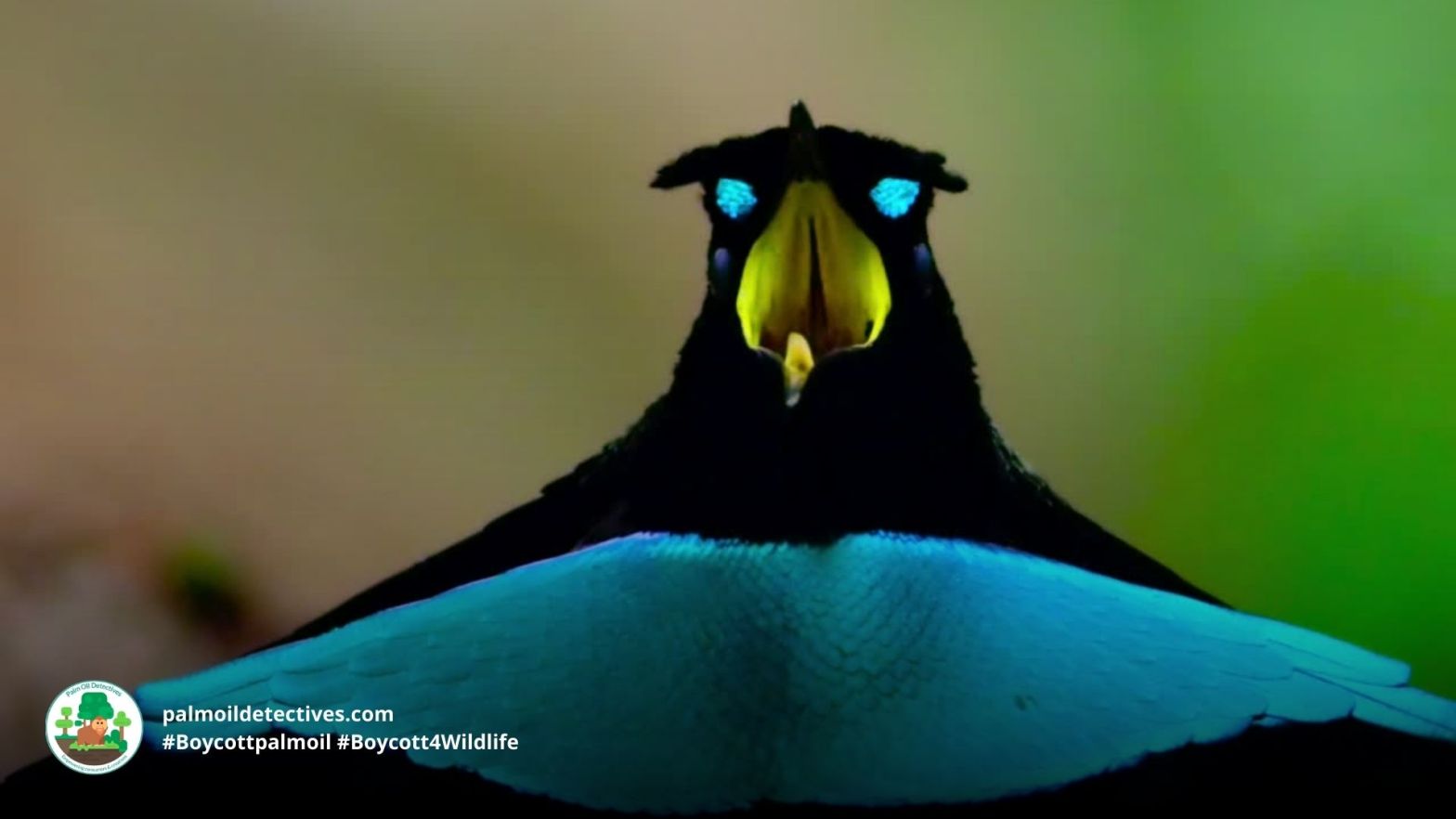Superb-bird-of-paradise Lophorina superba
Extant (resident)
Superb Birds of Paradise face multiple threats including #hunting, #mining, #palmoil, #timber #deforestation in #WestPapua and #PapuaNewGuinea. Help them to survive and #Boycottpalmoil #Boycott4Wildlife
Tweet
Male Vogelkop Superb Birds of Paradise are known for their beautiful dancing courtship displays. Don’t let them disappear forever along with #Papua’s precious rainforest. Fight for them and #Boycottpalmoil #Boycott4Wildlife
Tweet
Male superb-bird’s-of-paradise are the dramatic actors of New Guinea’s rainforest. They use their lush, multicoloured plumage to change shape in an elaborate dancing courtship display that typically goes on for many hours for the sole benefit of a female bird. At the end of the dancing ritual, the female will get to choose her mate between 15-20 male birds. These magnificent birds are struggling to survive, hemmed in on all sides by hunting, palm oil, mining and timber deforestation throughout their range. Help their survival every time you shop and #Boycottpalmoil #Boycott4Wildlife in the supermarket!
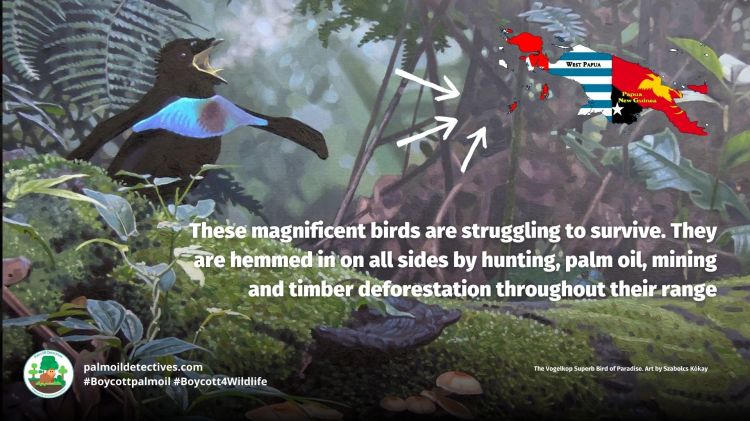

Although this animal was previously recorded on IUCN Red List as being ‘Least Concern’ 100,000’s of hectares of rainforest in Papua have since disappeared for palm oil, soy and meat – making this rating no longer relevant. These birds are most likely going to be upgraded to ‘vulnerable’ or ‘endangered’ due to massive deforestation throughout their range.
The superb-bird-of-paradise (A.K.A greater lophorina or the greater-bird-of-paradise faces the threat of rainforest loss throughout their range in West Papua and Papua New Guinea due to palm oil, mining and timber deforestation throughout their range.
Appearance & Behaviour
These birds are approximately 26 cm long and are dimorphic. Males possess a stunning iridescent green crown, blue-green breast cover and a velvety, iridescent black cape covering their backs. This plumage is used primarily for elaborate and intricate mating displays.
Female birds have russet coloured feathers with brownish buff coloured breast. Juvenile birds of both sexes appear like mature females with earthy russet coloured feathers.
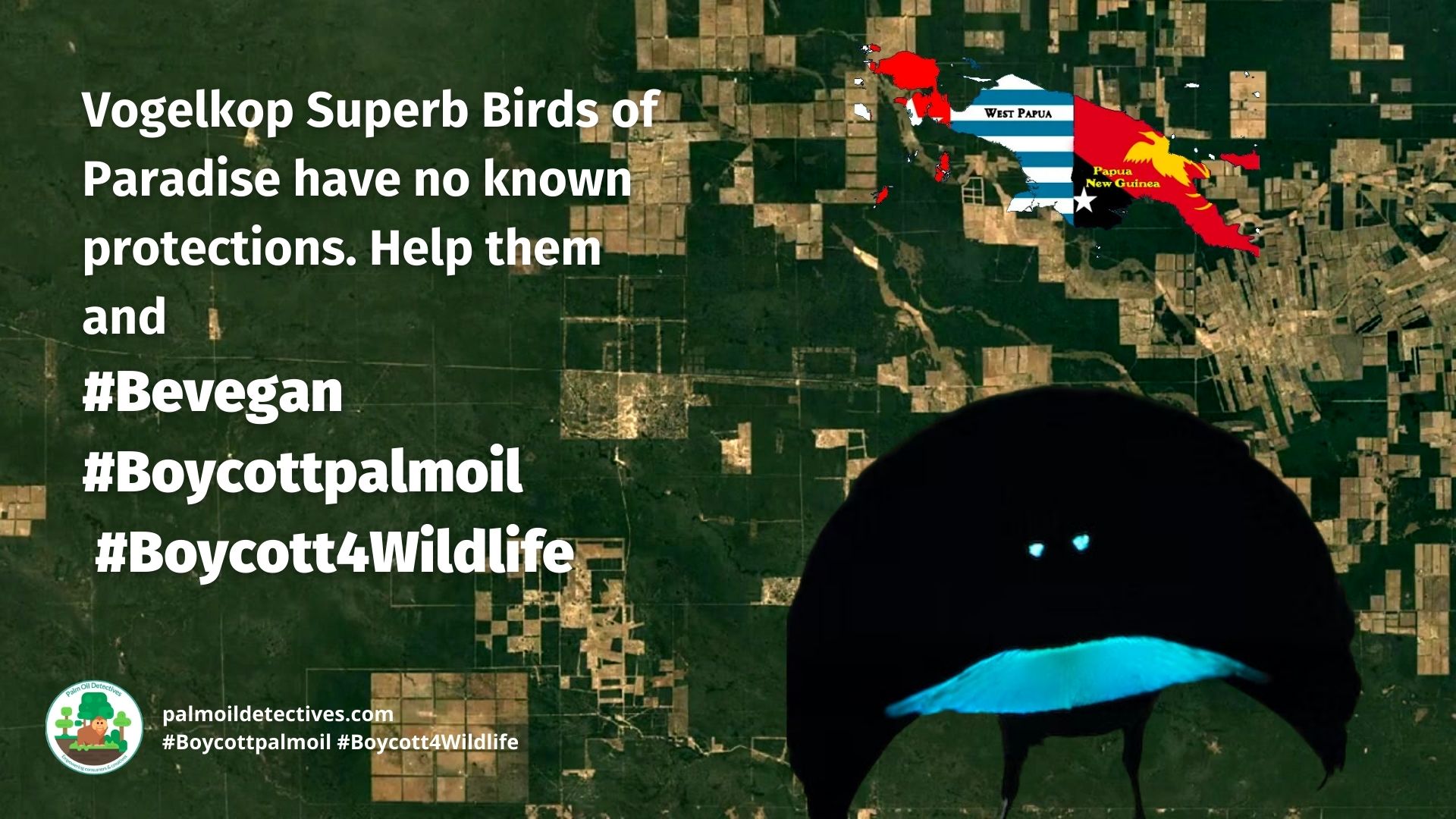
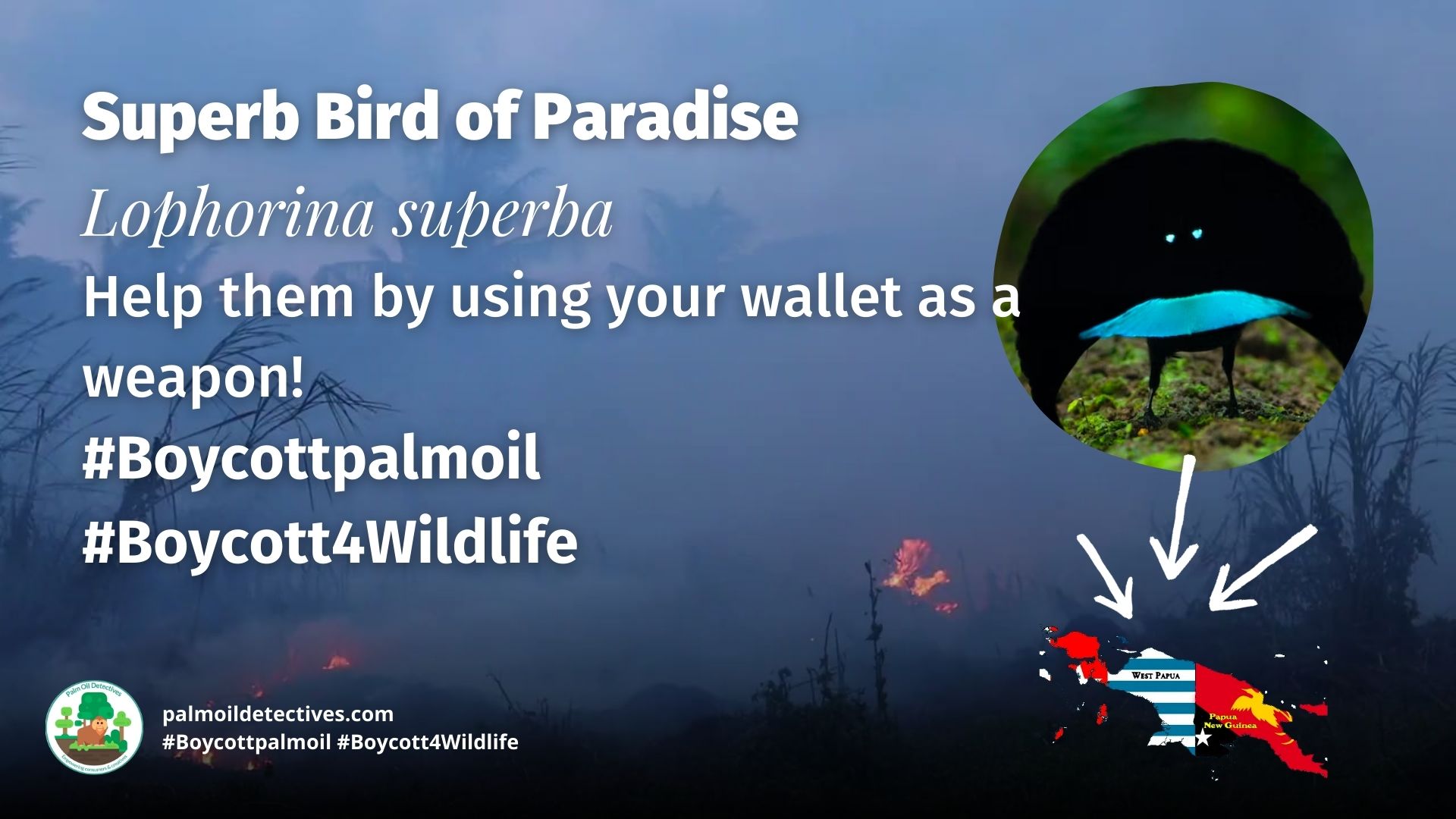
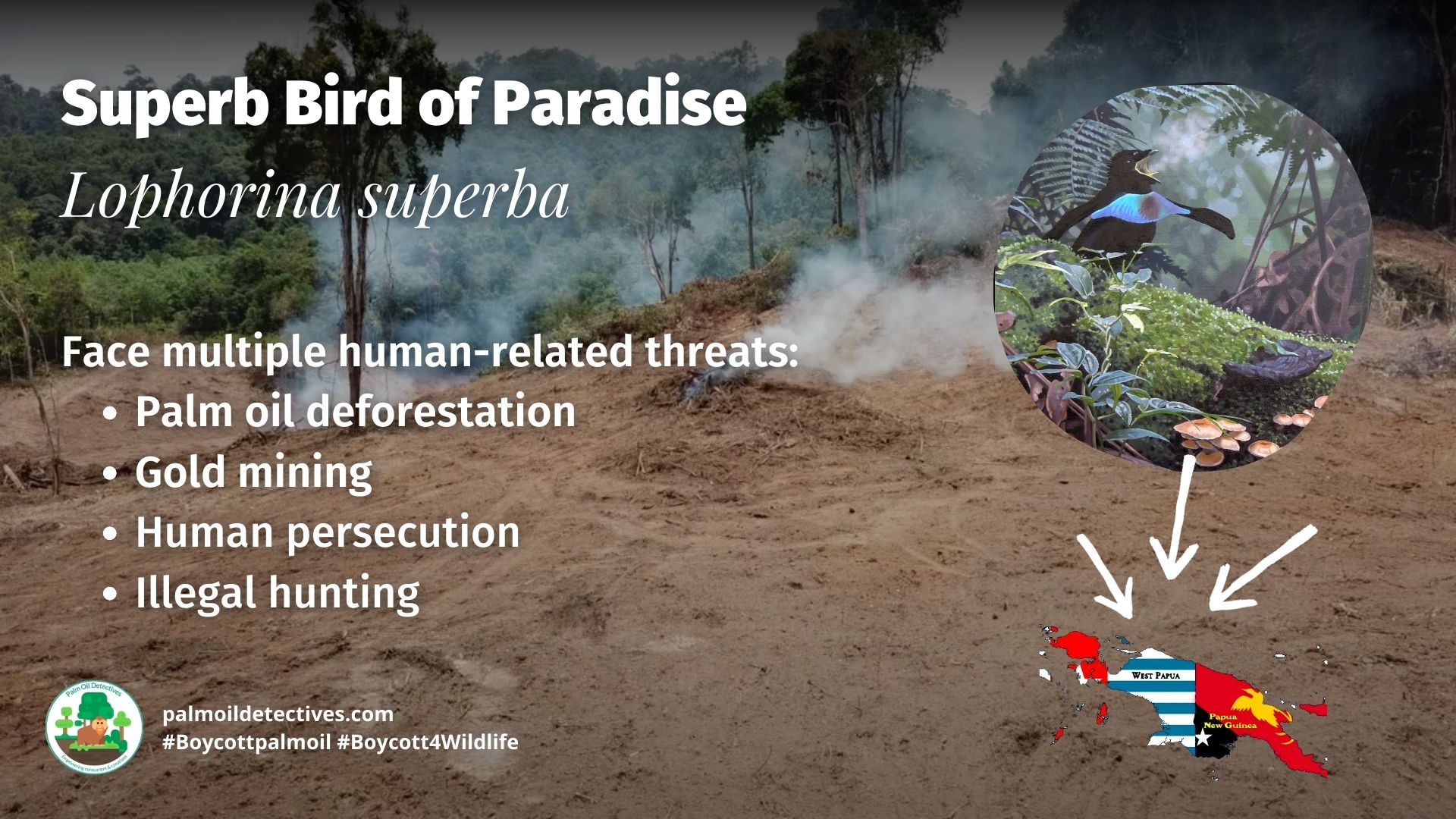
Threats
The superb-bird-of-paradise’s main threat is forest loss which has increased enormously over the past decade.




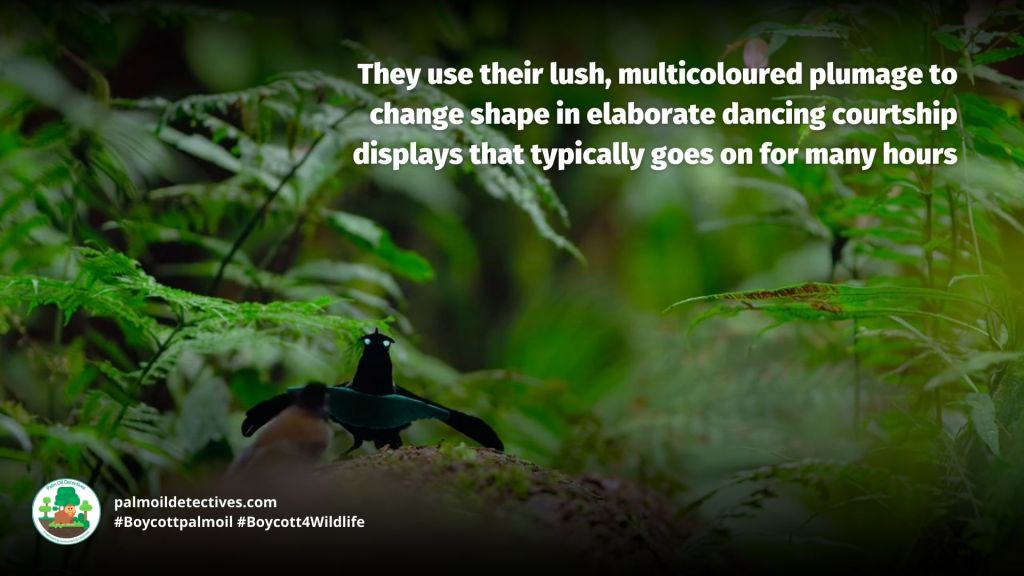


Habitat
Superb bird-of-paradise are distributed throughout rainforests and forest edges of Papua New Guinea and West Papua. They are also found throughout the steep mountain ranges of New Guinea. Their range coincides with forest either in the process of being destroyed or earmarked for destruction for palm oil, mining and timber deforestation.
Diet
The superb bird-of-paradise is omnivorous and has been known to eat fruits, insects and larger animals such as reptiles, frogs and small birds. They forage throughout the tree canopy and the forest floor for insects and other foods depending on seasonal availability. Males of this species are territorial and will defend an area of around 1.2ha for food and mating rights.
Mating and breeding
The competition between males for mating rights with females is fierce and aggressive. The superb bird-of-paradise has one of the most intricate and elaborate courtship displays of any animal in the world.
The first part of the courtship display involves simple movements. This is followed by the ‘high intensity display’ where the male scrubs the dirt and prepares the dancefloor for his dancing ritual. After this, he calls to the female with a loud call. The curious female approaches and watches. He spirals and furls out his feathers into a riotous display and black and bright blue feathers into a semi-circular shield shape. He dances in front of the female and snaps his tail feathers, similar to clicking one’s fingers.
The dancing courtship display of males to females can take many hours each day.
The female will typically reject 15-20 suitors before consenting to mate. The males will usually mate with more than one female.
Females will nest at the top of tree canopies using soft leaves and produce between 1-3 eggs in a clutch. These eggs take 16-22 days for incubation and following hatching, chicks will become indepedent after 16-30 days.
Female superb-bird’s-of-paradise reach sexual maturity two years before the males, the latter requiring longer to develop his beautiful feathers for courtship.
Support Superb Bird of Paradises by boycotting palm oil in the supermarket, it’s the #Boycott4Wildlife
Support the conservation of this species
This animal has no protections in place. Read about other forgotten species here. Create art to support this forgotten animal or raise awareness about them by sharing this post and using the #Boycottpalmoil #Boycott4Wildlife hashtags on social media. Also you can boycott palm oil in the supermarket.
Further Information
BirdLife International. 2020. Lophorina latipennis. The IUCN Red List of Threatened Species 2020: e.T181524111A181564897. https://dx.doi.org/10.2305/IUCN.UK.2020-3.RLTS.T181524111A181564897.en. Accessed on 23 February 2023.
Greater lophorina/ Superb Bird of Paradise on Wikipedia – – https://en.wikipedia.org/wiki/Greater_lophorina
Superb Bird of Paradise calling – https://xeno-canto.org/595939
Superb Bird of Paradise on Animalia.bio – https://animalia.bio/greater-lophorina


How can I help the #Boycott4Wildlife?
Contribute in five ways
1. Join the #Boycott4Wildlife on social media and subscribe to stay in the loop: Share posts from this website to your own network on Twitter, Mastadon, Instagram, Facebook and Youtube using the hashtags #Boycottpalmoil #Boycott4Wildlife.
2. Contribute stories: Academics, conservationists, scientists, indigenous rights advocates and animal rights advocates working to expose the corruption of the palm oil industry or to save animals can contribute stories to the website.
3. Supermarket sleuthing: Next time you’re in the supermarket, take photos of products containing palm oil. Share these to social media along with the hashtags to call out the greenwashing and ecocide of the brands who use palm oil. You can also take photos of palm oil free products and congratulate brands when they go palm oil free.
4. Take to the streets: Get in touch with Palm Oil Detectives to find out more.
5. Donate: Make a one-off or monthly donation to Palm Oil Detectives as a way of saying thank you and to help pay for ongoing running costs of the website and social media campaigns. Donate here

